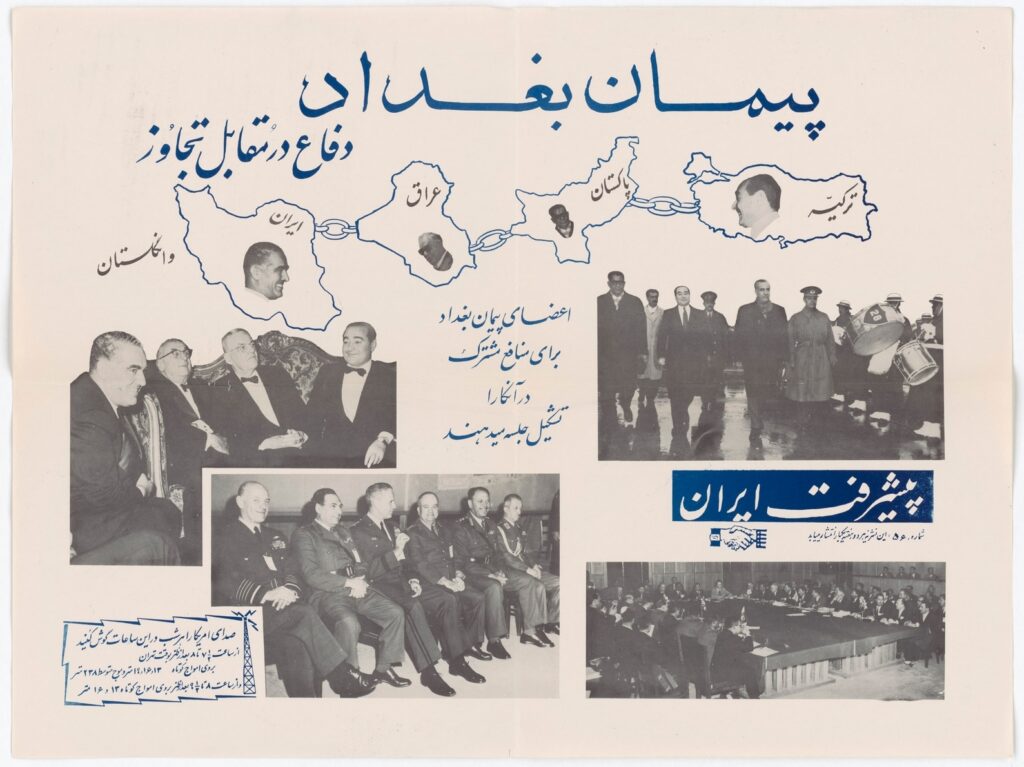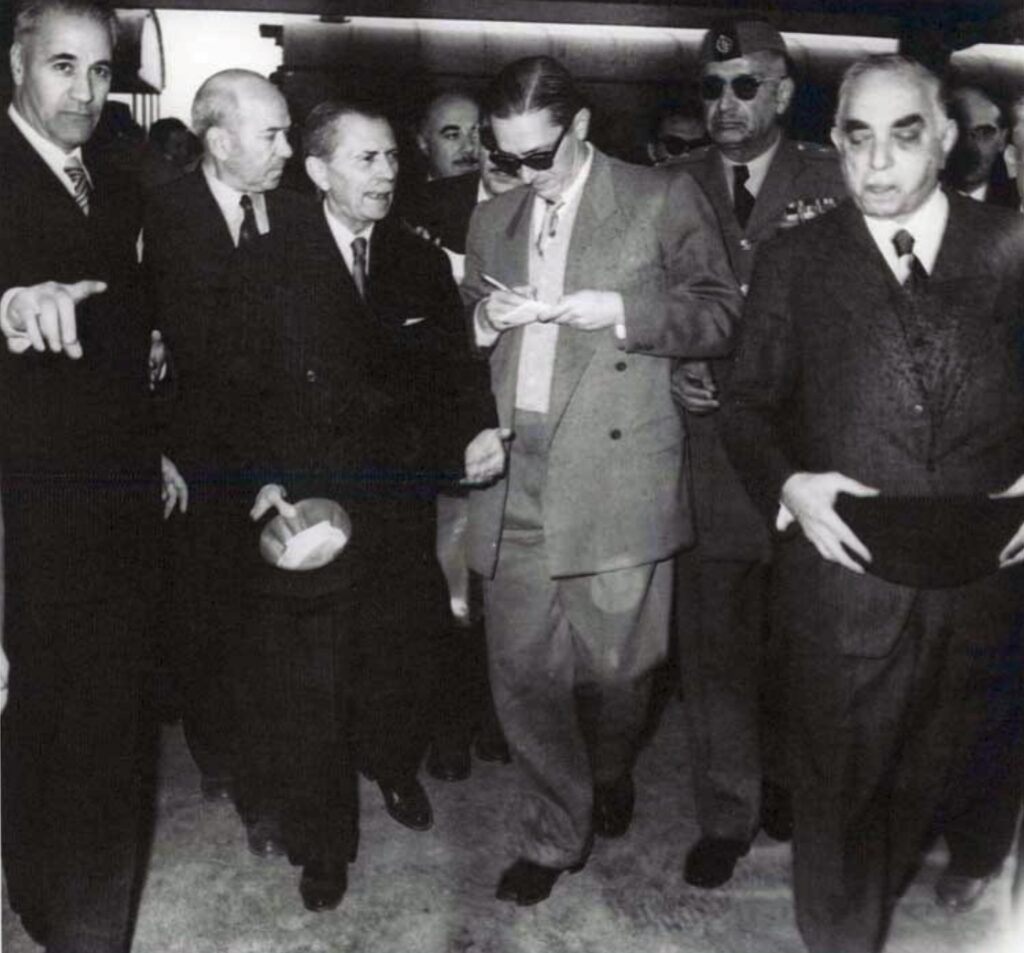The Baghdad Pact: NATO of the Middle East?

By Liam Nagle / Arab America Contributing Writer
During the Cold War that took place in the aftermath of the Second World War, many countries around the world had to pick sides between the two contenders – the United States and the Soviet Union. The Arab world was no exception, with Arab Nationalist movements often siding with the Soviets, while many of the Arab monarchies sided with the United States. In an effort to unite the defensive efforts of these countries against the Soviet Union, the United States created the Baghdad Pact. The pact, later referred to as the Central Treaty Organization or CENTO, had a primary goal of resisting Soviet expansion into the Middle East by creating a chain of strong states who would aid each other in mutual defense. How effective was this organization, and was it successful?
Origins

The states initially involved included Iraq, Turkey, Iran, and Pakistan, but also included the United Kingdom who also shared interests there. Interestingly, despite its involvement in creating the pact, the United States itself failed to join the alliance. Then-president Dwight D. Eisenhower attributed this to the “pro-Israel lobby” and the failure to gain the approval of the U.S. Congress, although others claimed that it was simply due to budgetary concerns.
In any case, the Baghdad Pact was modeled primarily off of the North Atlantic Treaty Organization, or NATO. The idea was that the U.S.-friendly states would aid each other in defense in cases of Soviet aggression, thereby strengthening themselves but also the U.S.’ position in the Middle East. But the pact, unlike NATO, didn’t feature a unified military command structure. Additionally, member-states didn’t usually have military bases within each other’s territory. Although the U.K. had military bases in Iraq and Pakistan, such cases were the exception rather than the norm. Nevertheless, both the United States and the United Kingdom armed the various member-states with their own weaponry, helping in their defensive efforts.
History

The Baghdad Pact ran into serious issues only a few years after its inception. In 1958, Iraq underwent a coup d’etat that deposed its pro-western monarchical government and replaced it with a pro-Soviet military junta. The new pro-Soviet government withdrew from the agreement, and the headquarters for the Baghdad Pact – renamed the Central Treaty Organization (CENTO) – was relocated to Ankara in Turkey.
Through the remainder of its existence, CENTO firmly established itself as an anti-Soviet alliance. When member countries would go to war with other countries, CENTO would hardly get involved. For example, when two separate Indo-Pakistan wars broke out In 1965 and 1971, Pakistan attempted to get assistance from CENTO. However, these requests were denied because CENTO established itself as a firmly anti-Soviet military alliance, rather than a general military alliance. This was further reinforced during the Arab-Israeli Wars, where each country had their own independent foreign policy with regards to the conflict and chose not to get involved as an alliance.
Even with its stated goal of resisting Soviet aggression, CENTO was largely ineffective. The Soviet Union never really had plans to outright invade states in the Middle East, which was the primary purpose of the alliance. Instead, the Soviets simply made alliances with preexisting governments in the Arab world such as those in Egypt, Syria, post-revolutionary Iraq, Libya, South Yemen, and Somalia. By doing so, it skirted the alliance and achieved its aims.
The alliance began to fall apart in the 1970s. In 1974, Turkey launched an invasion of the nearby island of Cyprus. Both the United States and United Kingdom opposed the Turkish invasion, with Britain withdrawing its military assets in the country, and both the U.S. and U.K. enacting an arms embargo of the country. However, the final death blow for the alliance came in 1979. The Iranian Revolution successfully overthrew the pro-western Iranian monarchy, resulting in Iran’s withdrawal and the alliance becoming defunct. In 1979, Turkey formally disbanded the alliance.
Conclusion
Ultimately, the alliance failed to achieve many of its aims. With the primary goal of countering the Soviet Union’s influence in the Middle East and greater Arab world, it thought that this influence would come from a direct Soviet invasion of neighboring countries. However, this didn’t come to pass; the Soviets had no interest in directly invading countries in the Middle East, and instead either aided or forged alliances with countries. Additionally, the organization itself was disjointed – the alliance refused to get involved in conflicts that weren’t with the Soviet Union, with countries pursuing their own foreign policies. The Iraqi coup in 1958 and the Iranian Revolution in 1979 culminated in the alliance’s eventual dissolution, and the countries each going their own separate ways.
Check out our blog here!








